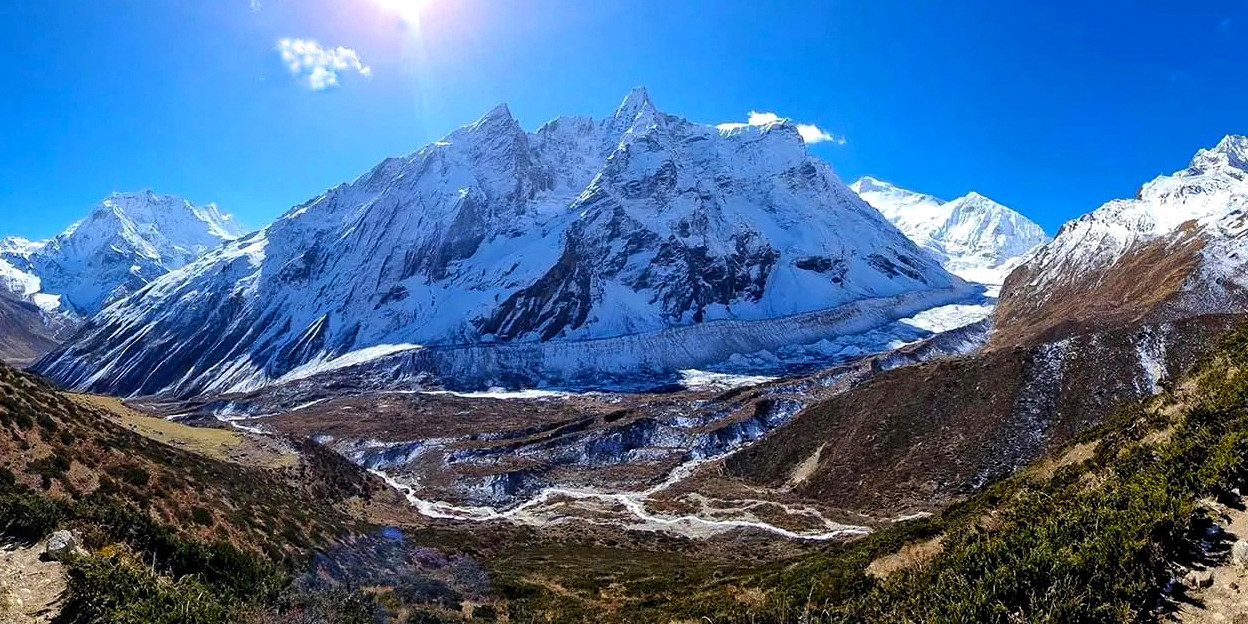Everest Base Camp Trek
The Everest Base Camp Trek is arguably the most famous trekking route in the world and a coveted adventure for mountain enthusiasts. This trek not only offers a chance to embrace the spectacular scenery of the Himalayas but also allows trekkers to immerse themselves in the heart of the Sherpa country and their rich culture. Here are some of the key highlights and aspects of the Everest Base Camp Trek:
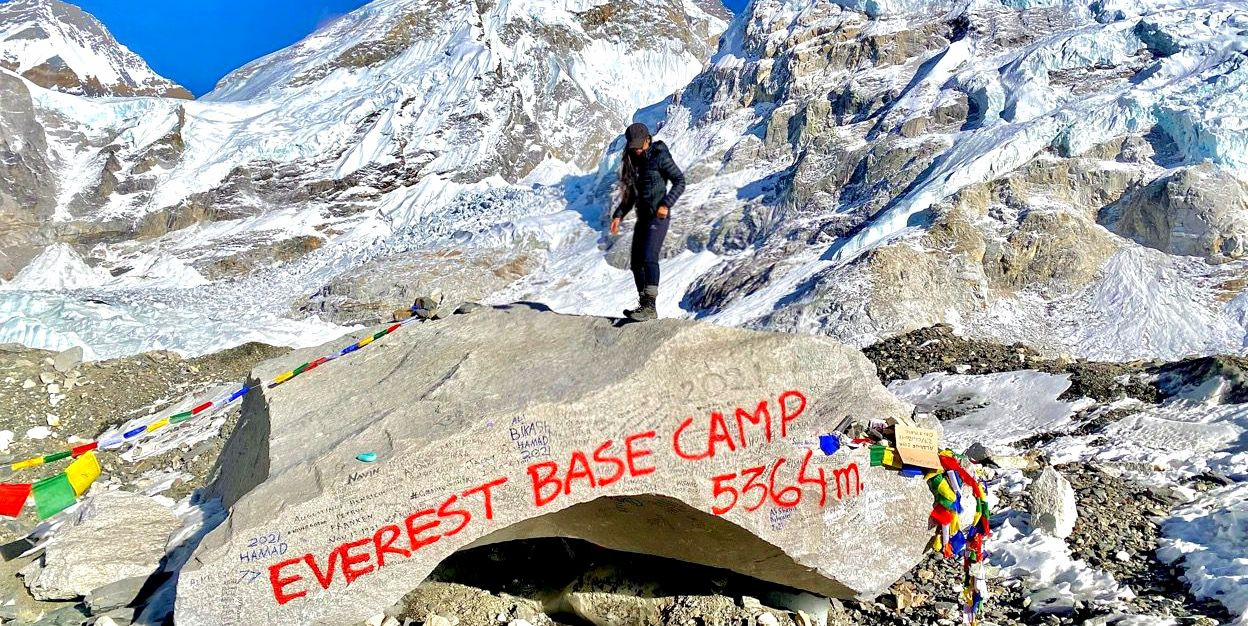
Key Highlights
-
Kala Patthar: Although the Everest Base Camp itself offers stunning views, the ascent to Kala Patthar (5,545 meters) is where you get the most dramatic and close-up views of Mount Everest, along with other peaks like Nuptse and Lhotse.
-
Sherpa Culture: The trek provides a deep dive into the lives of the Sherpa people, who are renowned for their mountaineering prowess. Villages like Namche Bazaar, Tengboche, and Dingboche offer insights into Sherpa culture and an opportunity to visit ancient monasteries and museums.
-
Tengboche Monastery: Located in Tengboche village, this is one of the largest and most famous monasteries in the Khumbu region. The monastery offers panoramic views of the Himalayan giants, including Everest, and is a spiritual center for the Sherpa community.
-
Sagarmatha National Park: The trek traverses through this UNESCO World Heritage Site, home to a variety of Himalayan flora and fauna, including the elusive snow leopard and the red panda.
-
Everest Base Camp: Reaching the Base Camp itself is an exhilarating experience, providing a sense of accomplishment and the unique thrill of being at the foot of the world's highest mountain.
Trek Details
-
Duration: Typically, the trek takes about 12 to 14 days, depending on the itinerary and acclimatization days.
-
Difficulty: The trek is considered strenuous due to its high altitude, rough terrain, and the length of the walking days. Acclimatization days are included in the itinerary to help trekkers adjust to the high elevation.
-
Altitude: The trek reaches its highest point at Kala Patthar, at 5,545 meters, with Everest Base Camp itself at about 5,364 meters.
The Everest Base Camp Trek with Relax Getaways means you’ll be guided every step of the way by experts who not only ensure your safety and comfort but also enrich your journey with cultural insights and historical context, making your trek much more than just a walk in the mountains.
Annapurna Circuit Trek
The Annapurna Circuit Trek is one of the most renowned and comprehensive treks in Nepal, celebrated for its diverse scenery and cultural variety. Circling the Annapurna massif, the trek passes through subtropical forests, high mountain passes, and arid climes, offering an incredible array of landscapes. Here's an overview of what makes the Annapurna Circuit a must-do for trekkers around the world:
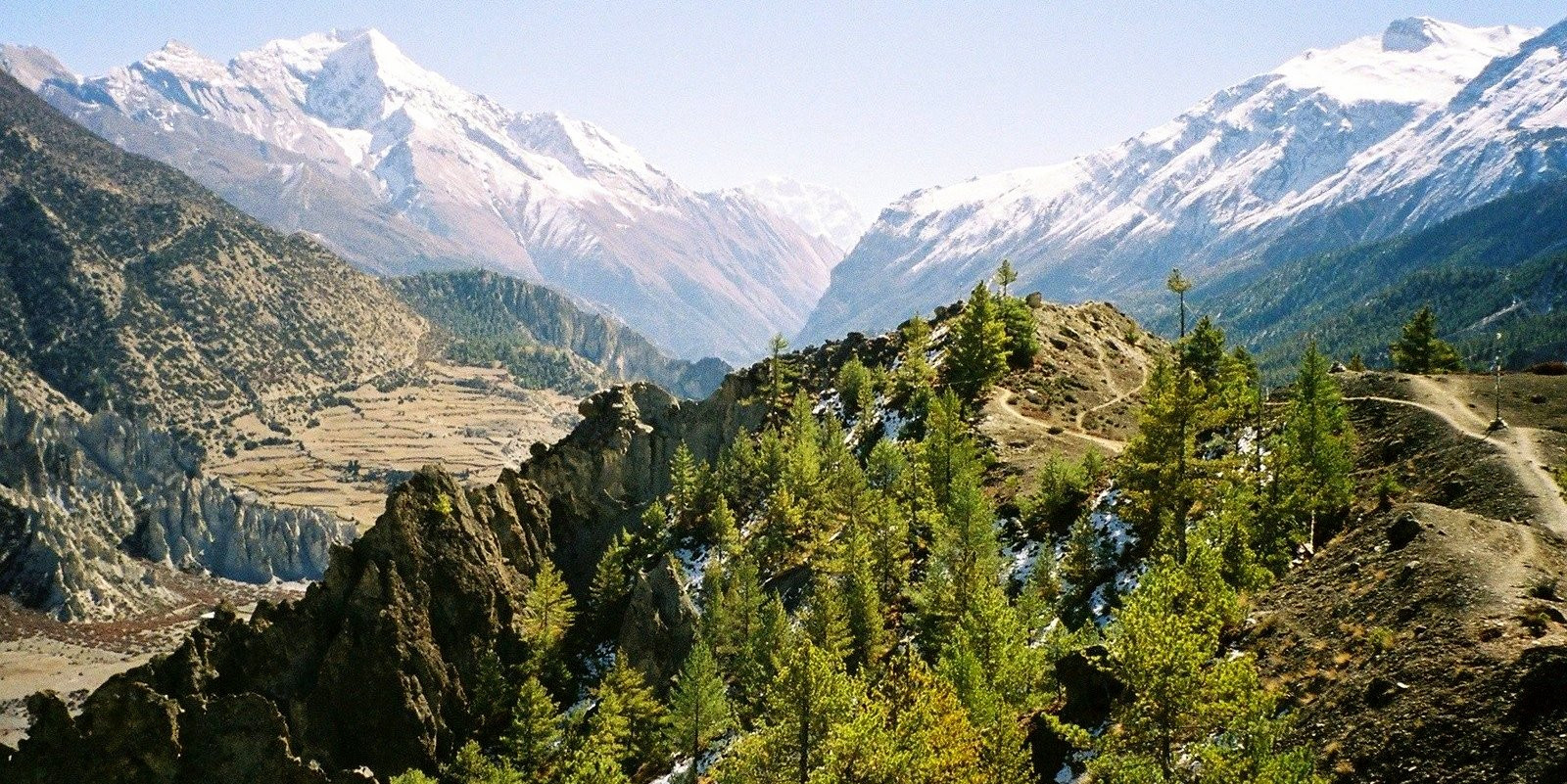
Key Highlights
-
Thorong La Pass: At an elevation of 5,416 meters, crossing Thorong La is the highest and most challenging part of the trek. The pass offers unforgettable views of the Annapurna range and the sprawling Mustang region.
-
Diverse Ecosystems: From lush paddy fields and subtropical forests in the lower reaches to high-altitude landscapes and the Tibetan plateau-style scenery in the Manang district, the trek showcases a broad biodiversity.
-
Cultural Experience: The trek provides a rich tapestry of cultural experiences, passing through Hindu and Buddhist villages where trekkers can witness the daily lives of the Gurung, Manangi, and Thakali communities, known for their warm hospitality.
-
Natural Hot Springs: After long days of trekking, you can relax in the natural hot springs at Tatopani, which are believed to have healing properties.
-
Muktinath Temple: This sacred site for both Hindus and Buddhists marks a significant spiritual high point of the trek, located just beyond the Thorong La Pass.
Trek Details
-
Duration: The full circuit typically takes about 15 to 20 days to complete, depending on walking pace and acclimatization stops.
-
Difficulty: The trek is considered moderate to challenging, suitable for reasonably fit individuals. The high altitude of Thorong La Pass demands careful acclimatization.
-
Altitude: The highest point of the trek is Thorong La Pass at 5,416 meters.
With Relax Getaways, trekkers are assured a well-organized, safe, and enriching journey along the Annapurna Circuit. Our expert local guides and well-thought-out itineraries are designed to allow you to fully enjoy the natural beauty and cultural richness of this epic trek, ensuring that you have a memorable and hassle-free adventure in the heart of the Himalayas.
Langtang Valley Trek
The Langtang Valley Trek offers a delightful journey through a path less traveled, set in a tranquil valley surrounded by snow-capped mountains, making it one of Nepal's most enchanting treks. Located relatively close to Kathmandu, it provides a remarkable combination of natural beauty and cultural richness without the crowds typical of more famous trekking routes like Everest or Annapurna. Here’s a detailed look at the Langtang Valley Trek:
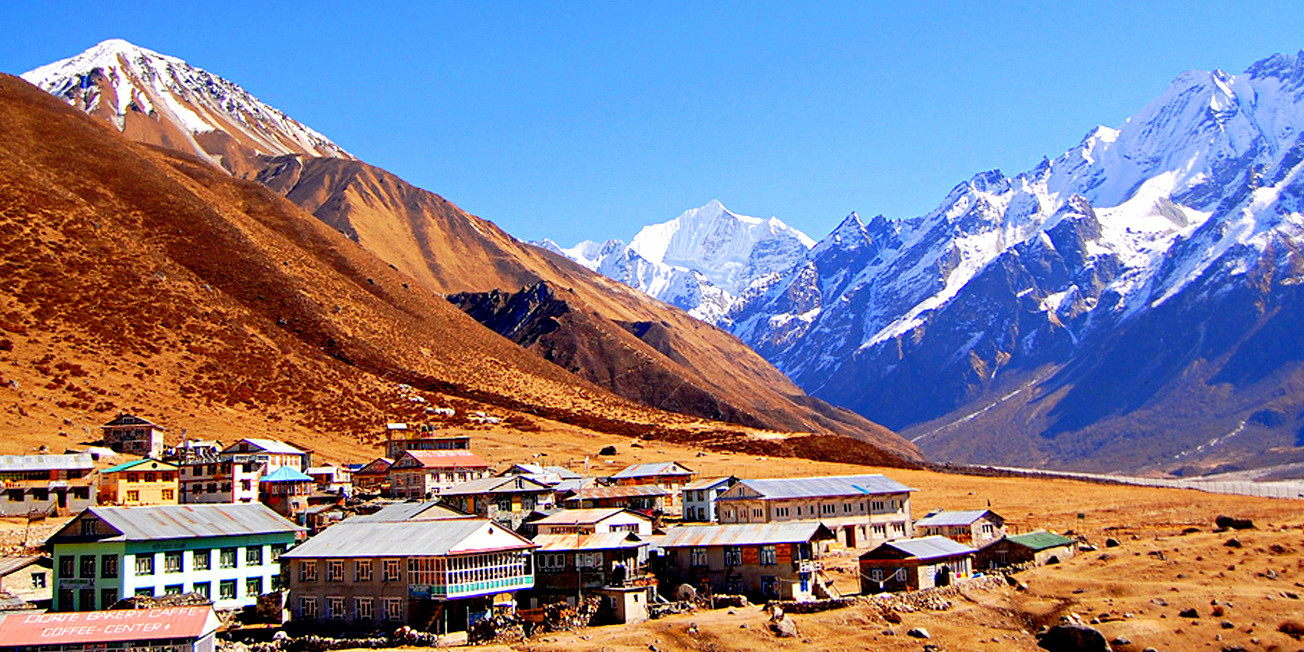
Key Highlights
-
Langtang National Park: The trek passes through the beautiful Langtang National Park, home to diverse wildlife including the red panda, Himalayan tahr, and numerous bird species. The park also features lush forests and scenic mountain vistas.
-
Kyanjin Gompa: The trek’s pinnacle is the visit to Kyanjin Gompa, a centuries-old Buddhist monastery set against the backdrop of the Langtang Himalayas. The area around the monastery offers opportunities for short excursions to viewpoints like Kyanjin Ri or Tserko Ri, which provide panoramic views of the surrounding peaks.
-
Tamang Culture: The valley is predominantly inhabited by the Tamang people, whose culture, language, and religion are similar to those of Tibetan culture. The trek offers a unique insight into their daily lives and traditional practices, including intricate handcrafts and colorful festivals.
-
Accessibility and Recovery: The Langtang trek accessibility is a key feature, as it’s easily reachable from Kathmandu. The region has shown remarkable recovery and resilience after being heavily affected by the 2015 earthquake, with reconstructed trails and teahouses.
Trek Details
-
Duration: Typically, the trek takes about 7 to 9 days, depending on the exact route and side trips.
-
Difficulty: The trek is considered moderate, making it suitable for trekkers who may not have extensive high-altitude experience.
-
Altitude: The highest accessible point during the trek is Tserko Ri, which is about 5,000 meters above sea level.
Choosing Relax Getaways for your Langtang Valley Trek means choosing an experienced partner who prioritizes your safety, comfort, and a deep engagement with the local culture. Our commitment is to provide a memorable and immersive trekking experience, allowing you to enjoy the serene beauty and unique culture of the Langtang Valley with peace of mind.
Manaslu Circuit Trek
The Manaslu Circuit Trek is a stunning journey around the world's eighth-highest mountain, offering a less trodden and more serene alternative to the more famous treks in Nepal. Known for its breathtaking landscapes and rich cultural heritage, the Manaslu Circuit provides an authentic Himalayan trekking experience. Here’s an overview of what makes the Manaslu Circuit a remarkable choice for trekkers:
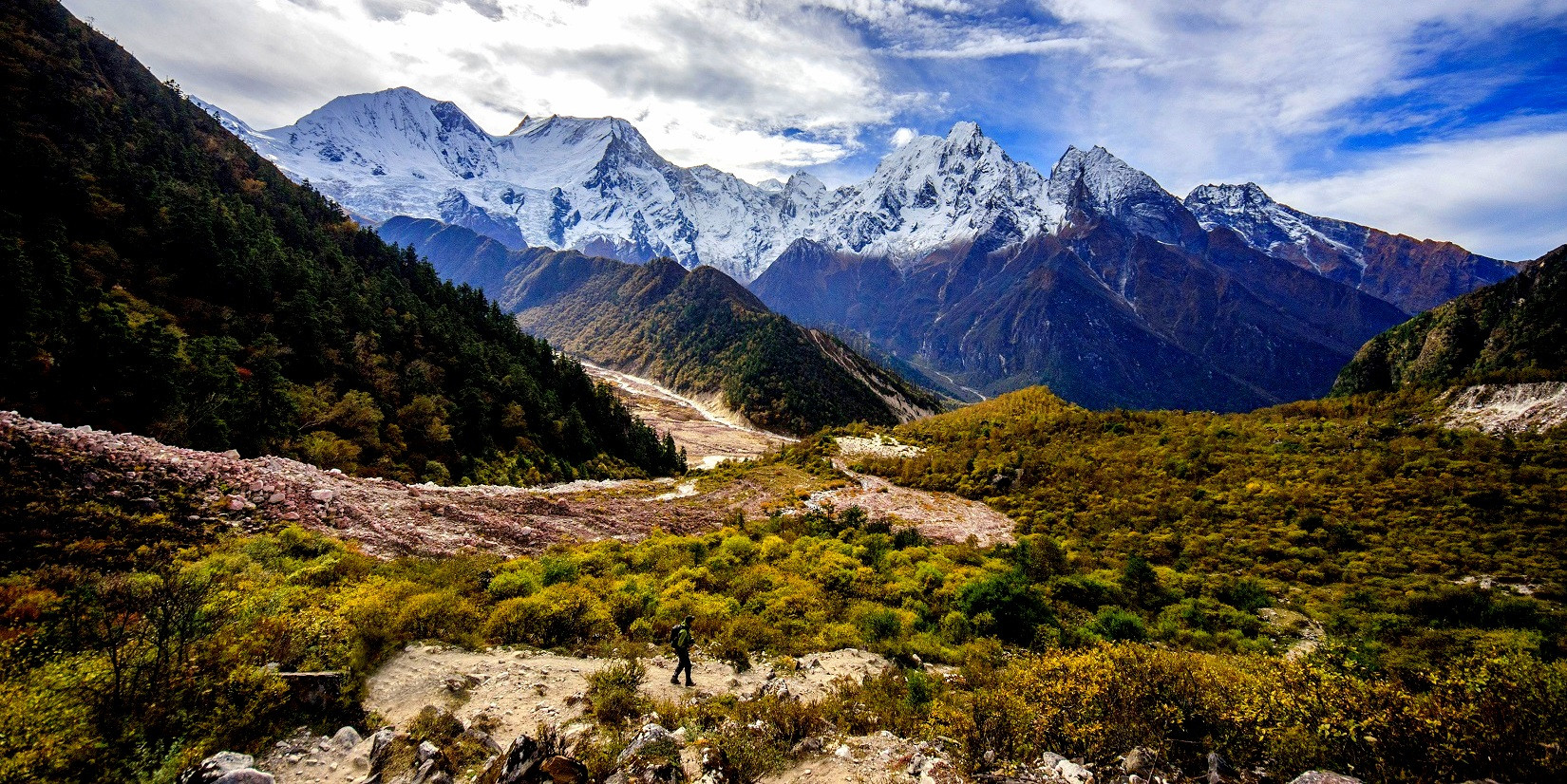
Key Highlights
-
Spectacular Scenery: The trek offers a spectacular mix of natural beauty, including high mountain passes, ancient forests, and majestic rivers, all dominated by the towering presence of Mount Manaslu.
-
Larkya La Pass: Crossing the Larkya La Pass at 5,106 meters is a highlight and also the highest point of the trek. It provides dramatic views over the Manaslu and surrounding peaks and is considered one of the most dramatic pass crossings in the Himalayas.
-
Cultural Diversity: The trail winds through various ethnic villages, including those of the Nubri and Tsum who share Tibetan Buddhist roots. Their unique customs, traditional architecture, and festivals add a rich cultural layer to the trekking experience.
-
Remote and Peaceful: The Manaslu Circuit is less crowded than its more famous counterparts, offering a more peaceful trekking experience that makes it easy to connect with nature and local life.
Trek Details
-
Duration: The trek usually takes about 14 to 18 days, depending on the chosen route and side trips.
-
Difficulty: This trek is considered challenging due to its remote nature and the high altitude of Larkya La Pass. Proper preparation and fitness are essential.
-
Altitude: The highest point of the trek is Larkya La Pass at 5,106 meters
With Relax Getaways, trekkers are assured of an expertly managed Manaslu Circuit Trek. We handle all aspects of the journey, from securing all necessary Manaslu Circuit permits to providing knowledgeable local guides and support staff, ensuring you have a safe, memorable, and enriching trekking experience. Our commitment to sustainable travel practices helps preserve the unique environments and cultures that make the Manaslu region so special.
Upper Mustang Trek
The Upper Mustang Trek offers a truly unique experience, distinguished by its remote, stark landscapes and its preservation of ancient Tibetan culture. Often referred to as the "Last Forbidden Kingdom," because it was closed to outsiders until 1992, Upper Mustang remains one of the most preserved regions in the world, where traditional Tibetan culture remains largely untouched by modernization. Here's a closer look at what makes the Upper Mustang Trek so special:
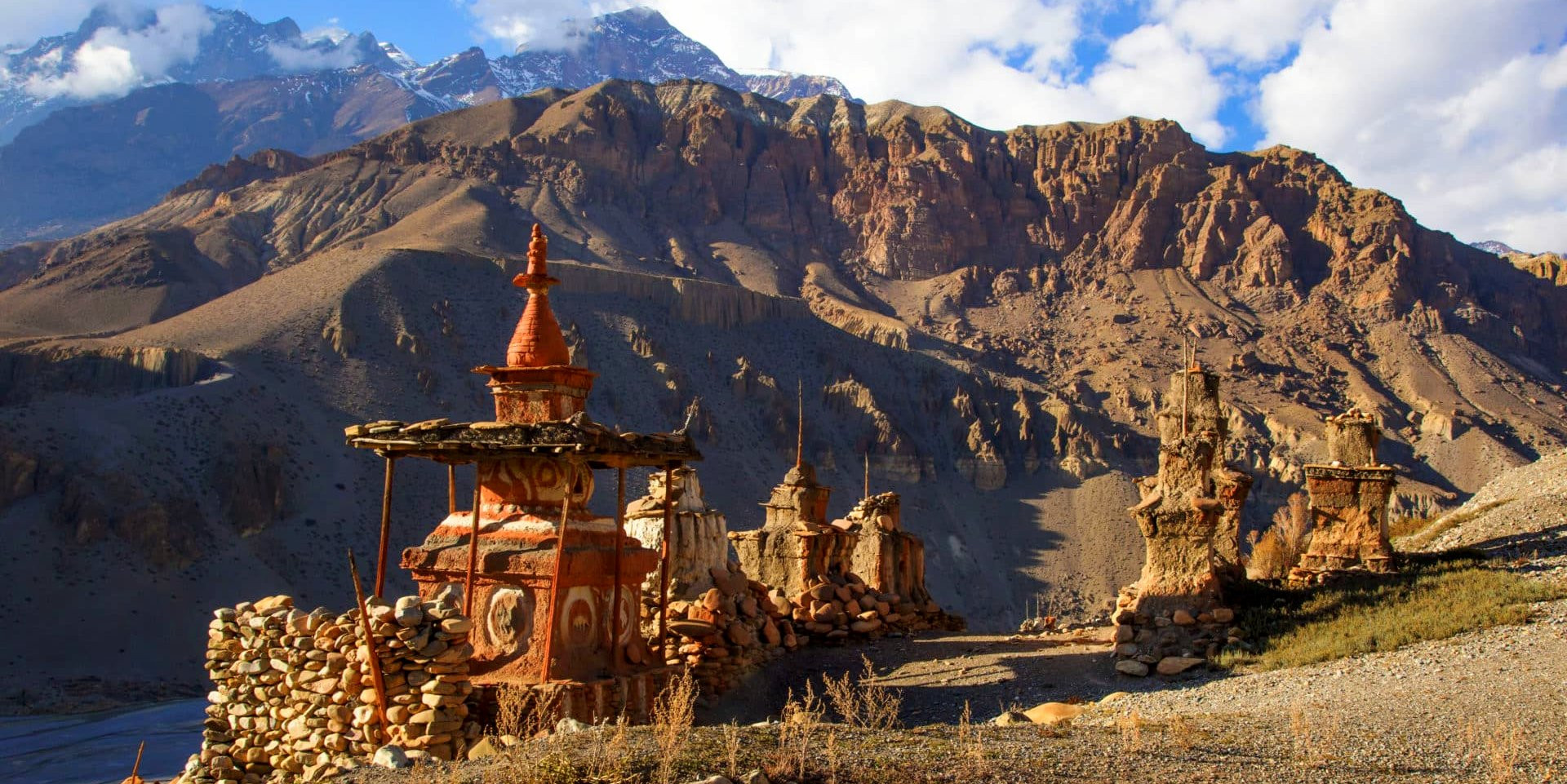
Key Highlights
-
Lo Manthang: The walled capital of the former Kingdom of Mustang is a highlight of the trek. This ancient town is a treasure trove of old Buddhist monasteries, royal palaces, and labyrinthine alleyways that give a glimpse into a way of life that has remained unchanged for centuries.
-
Stunning Landscapes: The landscape of Upper Mustang is a dramatic contrast to the lush greenery of other parts of Nepal, offering arid, desert-like conditions with deep ravines and rock shelves flanked by snowy peaks.
-
Tiji Festival: An annual event in Lo Manthang that features traditional Tibetan dances, music, and religious ceremonies. The festival is a colorful display of local culture and a significant attraction for visitors in May.
-
Ancient Caves and Art: The region is famous for its mysterious cave systems, some of which contain ancient murals and artifacts. These caves, believed to be thousands of years old, offer a fascinating insight into the history of the Mustang people.
Trek Details
-
Duration: Typically, the trek takes about 10 to 14 days, depending on the itinerary.
-
Difficulty: The trek is moderate in difficulty. Although it does not reach the extreme altitudes of other Himalayan treks, the arid conditions and strong winds can make the trek challenging.
-
Altitude: The trek reaches its highest point at around 3,800 meters, which is considerably lower than many other popular treks in Nepal.
Exploring Upper Mustang with Relax Getaways allows you to not only witness the unparalleled beauty of the region but also ensures you do so responsibly and sustainably. We provide expert guides who are intimately familiar with the local culture and landscape, ensuring a safe and enriching journey through one of Nepal’s most mystical and preserved regions.
Upper Dolpo Trek
The Upper Dolpo Trek is one of Nepal's most remote and mystical trekking adventures, offering an immersive experience into a region that has remained largely untouched by modern civilization. Known for its rugged high passes, unique Tibetan Buddhist culture, and stunning natural beauty, including the crystal-clear Phoksundo Lake, Upper Dolpo offers a journey back in time. Here’s a detailed look at what makes the Upper Dolpo Trek a captivating and challenging expedition:
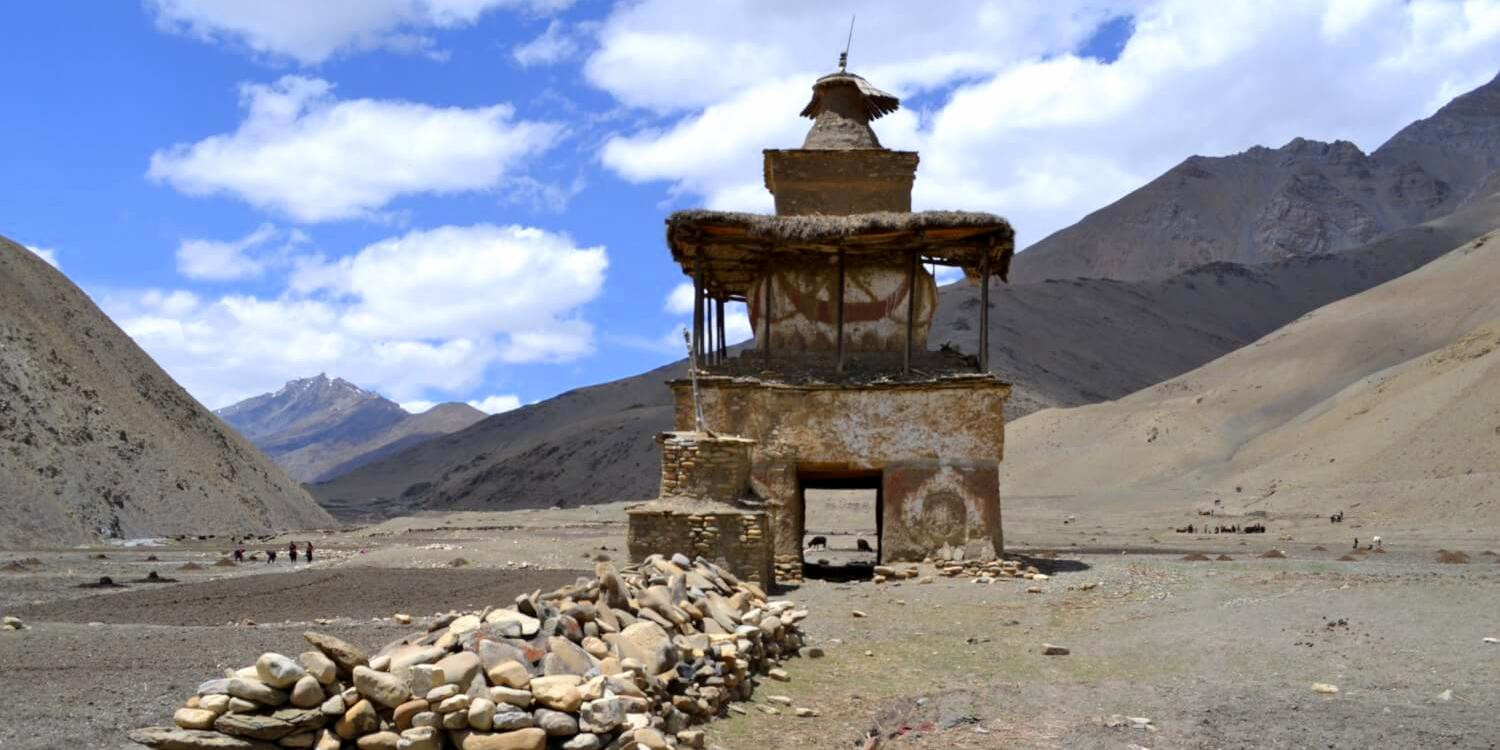
Key Highlights
-
Shey Phoksundo Lake: This trek features the spectacular Shey Phoksundo Lake, known for its deep blue and emerald colors. The lake is Nepal's deepest and second-largest lake, surrounded by rocky cliffs and forests.
-
Ancient Monasteries: Upper Dolpo is dotted with ancient monasteries (gompas), including the famous Shey Gompa, which is over 800 years old. These centers of Tibetan Buddhist practice are vital to the spiritual life of the Dolpo people.
-
Remote Villages: The trek passes through isolated villages where life has remained unchanged for centuries. These communities, such as Ringmo, follow a traditional lifestyle that revolves around agriculture, animal husbandry, and trade.
-
Stunning Landscapes: The landscape ranges from arid highlands to starkly beautiful mountain vistas, offering some of the most dramatic trekking terrains in Nepal.
Trek Details
-
Duration: The trek typically lasts between 18 to 24 days, depending on the specific route and side trips.
-
Difficulty: This trek is considered challenging due to its remote location, the lack of facilities, the high altitude, and the extensive walking distances involved.
-
Altitude: The trek reaches altitudes of over 5,000 meters, including several high passes like Nangdalo La, Sela La, and Jeng La.
Trekking in Upper Dolpo with Relax Getaways offers an unparalleled opportunity to explore one of the most untouched regions of the Himalayas. Our expertly curated itineraries ensure that adventurers can safely and responsibly enjoy the unique cultural and natural treasures of Upper Dolpo, supported by our experienced guides and porters who are integral to providing a deep and meaningful connection to the region's heritage and landscapes.
Makalu Base Camp Trek
The Makalu Base Camp Trek is a true adventure for trekkers seeking to explore one of the less frequented regions in Nepal, offering a starkly beautiful journey to the base of Mount Makalu, the fifth highest mountain in the world. This trek is renowned for its solitude and pristine wilderness, appealing to those who wish to experience a more rugged and remote Himalayan environment. Here’s what you need to know about trekking to Makalu Base Camp:
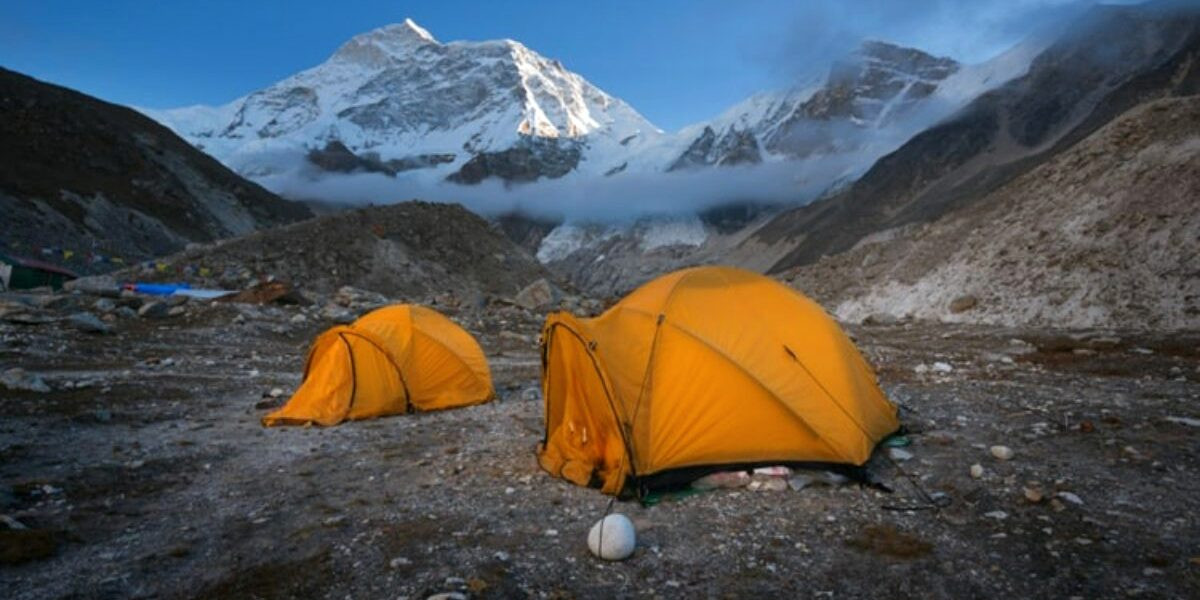
Key Highlights
-
Makalu-Barun National Park: The trek traverses through this national park, a protected area known for its spectacular biodiversity including orchids, rhododendrons, and a range of wildlife such as the red panda and snow leopard.
-
High Alpine Terrain: As the trail ascends, trekkers pass through a variety of landscapes, from lush tropical forests at lower altitudes to rocky glaciers and snow-capped peaks as they approach Makalu Base Camp.
-
Solitude and Isolation: Unlike the more crowded treks in Nepal, the Makalu Base Camp Trek offers a sense of isolation and untouched natural beauty, often allowing trekkers to explore without encountering many other tourists.
-
Stunning Views of Makalu: The trek provides up-close views of Mount Makalu and, from higher vantage points, panoramic views that include Everest, Lhotse, and Baruntse.
Trek Details
-
Duration: The trek usually lasts about 16 to 20 days, depending on the starting point and pace.
-
Difficulty: This trek is considered challenging due to its remote location, length, and the high altitudes involved, with trails often crossing passes above 4,000 meters.
-
Altitude: The trek reaches its highest point at Makalu Base Camp, situated at an altitude of approximately 4,870 meters (15,978 feet).
The Makalu Base Camp Trek with Relax Getaways ensures a well-organized, safe, and deeply engaging experience. Our expert guides are not only familiar with the terrain but also bring insights into the local flora, fauna, and cultural aspects of the regions you’ll pass through. We prioritize environmental stewardship and ensure that our treks are conducted in a manner that respects the natural beauty and ecological integrity of the Himalayas. This trek is perfect for those who seek adventure in the quieter corners of the Nepal Himalayas, where the beauty of the wild remains undisturbed.
Kanchenjunga Circuit Trek
The Kanchenjunga Circuit Trek is a captivating journey to the remote eastern part of Nepal, offering trekkers an opportunity to explore around the base of the world’s third-highest peak, Mount Kanchenjunga. This trek is less frequented than other high-altitude treks in Nepal, providing a sense of exclusivity and untouched natural beauty. It's an ideal choice for those who prefer a more solitary trekking experience in the spectacular settings of the Himalayas. Here’s what the Kanchenjunga Circuit Trek entails:
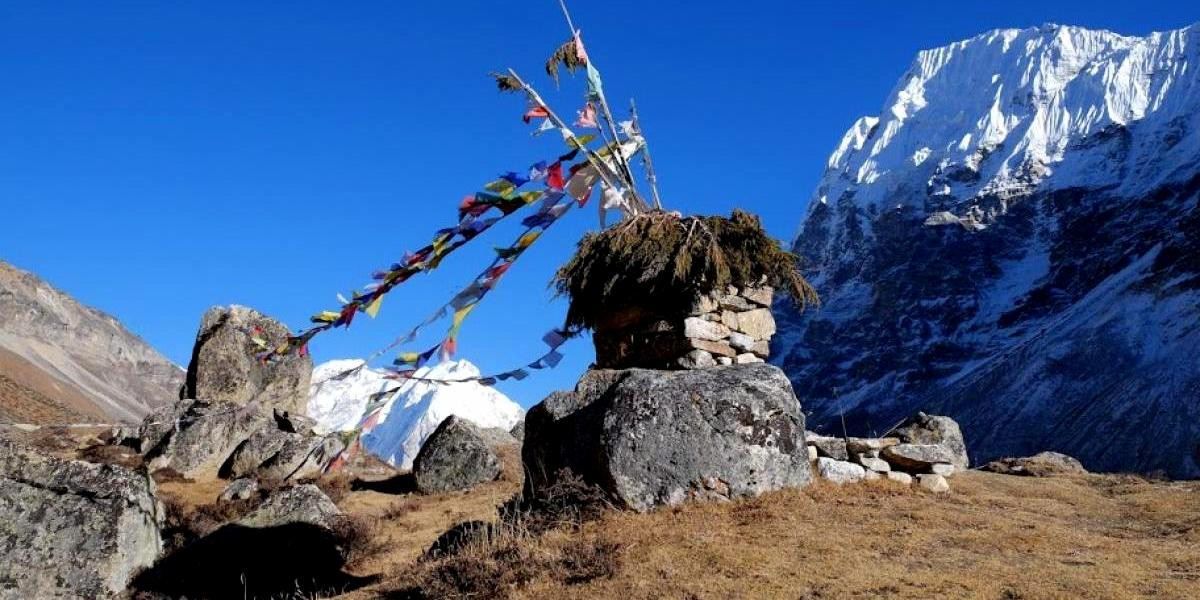
Key Highlights
-
Diverse Landscapes: The trek traverses through diverse environments, from lush rhododendron forests and alpine grasslands to high mountain passes and glaciers, offering a variety of breathtaking vistas.
-
Spectacular Mountain Views: Trekkers get unparalleled views of Mount Kanchenjunga, along with other impressive peaks such as Jannu (Kumbhakarna), Makalu, and Everest from certain viewpoints.
-
Rich Biodiversity: The trek is located within the Kanchenjunga Conservation Area, home to diverse flora and fauna, including the elusive snow leopard, red panda, and Himalayan black bear.
-
Cultural Experience: The trail passes through remote villages inhabited by diverse ethnic groups, such as the Limbu, Sherpa, and Rai communities, offering trekkers a glimpse into their rich cultural heritage and traditional lifestyles.
Trek Details
-
Duration: Typically, the trek takes about 20 to 24 days, depending on the chosen route and acclimatization days.
-
Difficulty: This is considered a challenging trek due to its remote location, the length of the trek, and the high altitudes involved, with multiple passes over 5,000 meters.
-
Altitude: The highest point of the trek is at Pang Pema (North Base Camp) at 5,143 meters.
The Kanchenjunga Circuit Trek with Relax Getaways means you are choosing an experienced team that ensures safety, environmental responsibility, and a genuine cultural exchange. We provide seasoned guides and well-planned logistics, allowing you to immerse yourself fully in the awe-inspiring beauty and profound solitude of the Kanchenjunga region. This trek is a splendid adventure for those eager to explore one of the Himalayas' most pristine and secluded landscapes.
Rara Lake Trek
The Rara Lake Trek is a journey to the largest lake in Nepal, Rara Lake, located in the remote northwestern part of Nepal. This trek is perfect for those looking to explore off-the-beaten-path destinations, offering a blend of stunning natural beauty and serene tranquility. The area around Rara Lake, being a part of Rara National Park, provides a haven for wildlife enthusiasts and nature lovers alike. Here’s a comprehensive look at the Rara Lake Trek:
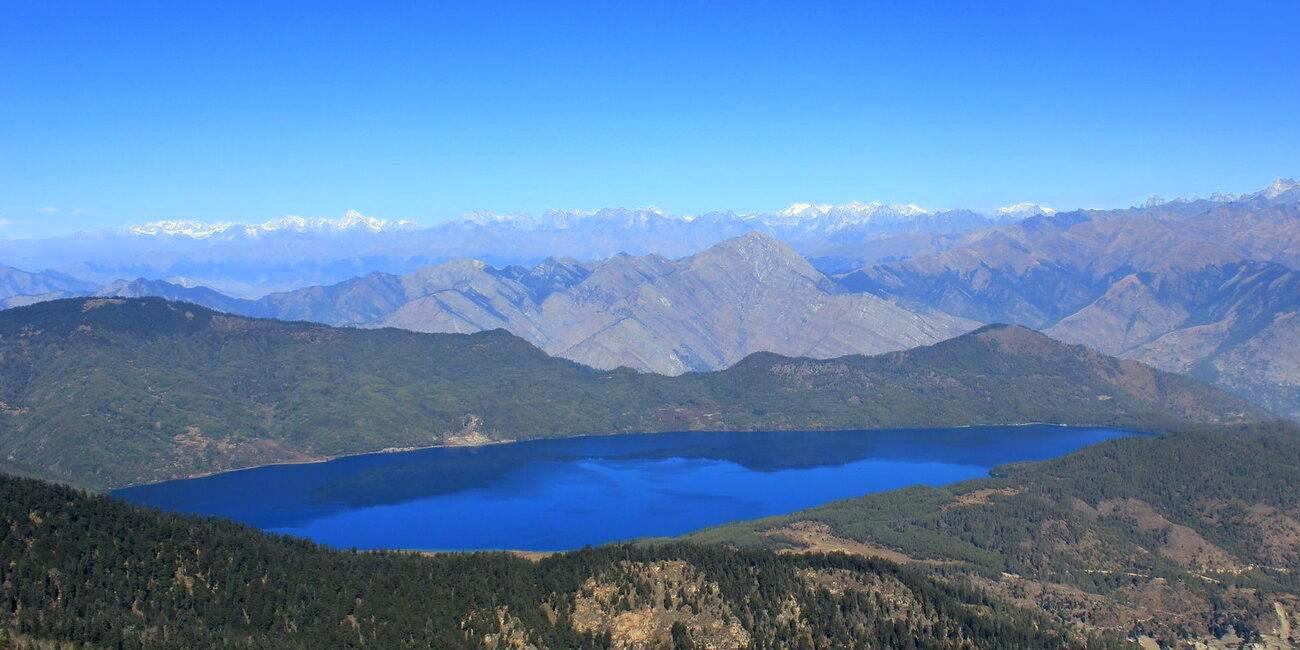
Key Highlights
-
Rara Lake: The focal point of the trek, Rara Lake, is renowned for its astonishing beauty. The lake spans an area of about 10.8 square kilometers, with crystal-clear blue water that reflects the surrounding snow-capped peaks.
-
Rara National Park: The trek routes through the Rara National Park, home to a variety of wildlife including Himalayan black bear, deer, leopard, and the elusive red panda. The park also boasts more than 200 species of birds, making it a paradise for bird watchers.
-
Remote Trails and Villages: The trek provides a glimpse into remote village life, where the culture and lifestyle have remained largely unchanged for decades. The trails are less crowded, offering a more intimate experience of the natural environment.
-
Diverse Ecosystems: The journey encompasses diverse ecosystems, ranging from coniferous forests to alpine pastures, offering varied landscapes that captivate trekkers.
Trek Details
-
Duration: The trek typically lasts about 7 to 10 days, depending on the route and starting point.
-
Difficulty: The trek is considered moderate in difficulty. It does not involve high altitudes or difficult passes, making it accessible to a wide range of trekkers.
-
Altitude: Rara Lake itself is situated at an altitude of about 2,990 meters (9,810 feet).
The Rara Lake Trek with Relax Getaways allows you to experience one of Nepal’s hidden gems in comfort and safety. Our team ensures that your journey is well-managed, from logistical planning to providing expert guides who not only know the trails but also bring stories of the region's history and culture to life. This trek is perfect for those who wish to enjoy the tranquility of nature away from the more crowded tourist trails, offering a peaceful retreat in one of the most beautiful settings in Nepal.
Gokyo Ri Trek
The Gokyo Ri Trek is an exceptional alternative to the classic Everest Base Camp trek, offering trekkers stunning views of the Everest region without the usual crowds. Centered around the Gokyo Lakes and the Gokyo Valley, this trek is known for its spectacular scenery, including turquoise lakes, soaring peaks, and the Ngozumpa Glacier, one of the largest in the Himalayas. Here’s a detailed look at what makes the Gokyo Ri Trek a memorable adventure:
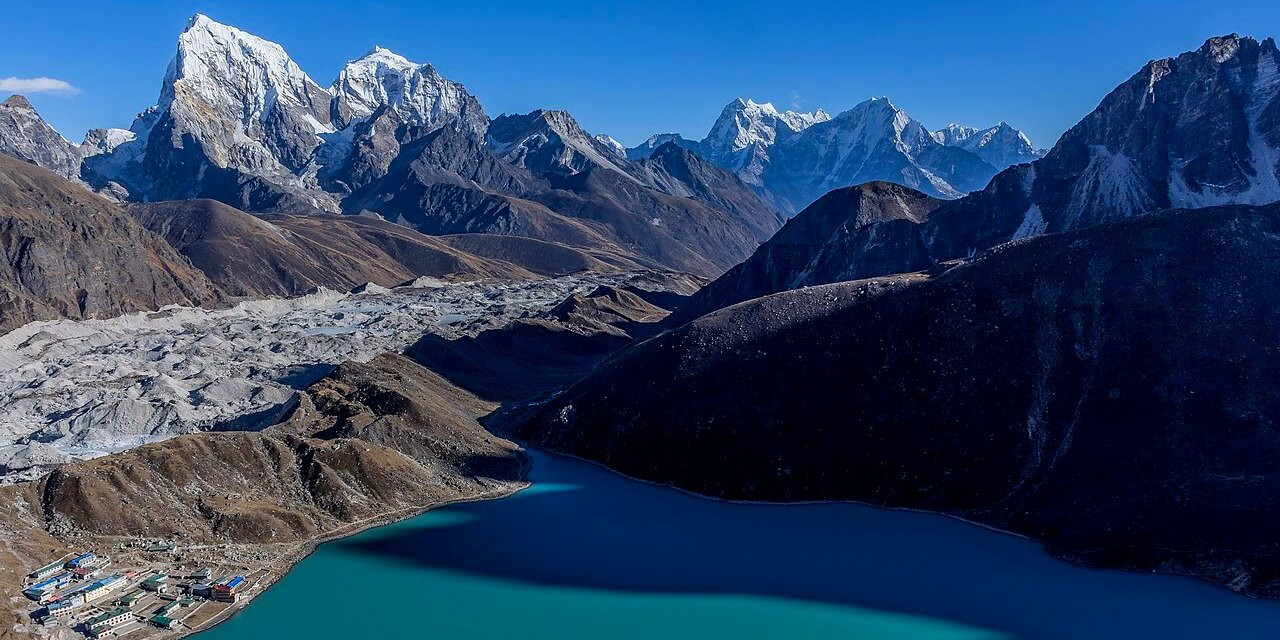
Key Highlights
-
Gokyo Lakes: The trek features the Gokyo Lakes, a series of six oligotrophic lakes. These are the highest freshwater lake system in the world, revered for their deep blue and green waters.
-
Gokyo Ri: Climbing Gokyo Ri (5,357 meters) is a major highlight, providing one of the best panoramic views in the Everest region, including of Everest, Lhotse, Makalu, and Cho Oyu.
-
Ngozumpa Glacier: Along the route, trekkers cross the Ngozumpa Glacier, the largest glacier in the Himalayas, offering a unique and rugged landscape with impressive ice formations.
-
Renjo La Pass: For many, the trek includes crossing the Renjo La pass (5,360 meters), which offers yet another breathtaking vantage point of the Everest region.
Trek Details
-
Duration: The trek typically takes about 12 to 15 days, depending on the chosen route and the pace of trekking.
-
Difficulty: This trek is considered challenging due to its high altitudes and the steep ascent to Gokyo Ri. Trekkers need to be in good physical condition and properly acclimatized to the altitude.
-
Altitude: The highest point of the trek is Gokyo Ri at 5,357 meters.
Trekking the Gokyo Ri with Relax Getaways offers an immersive experience in the heart of the Himalayas. Our expert guides ensure that all aspects of the trek are well-managed, from acclimatization schedules to daily trekking paces, allowing you to fully enjoy the natural beauty and grandeur of the Gokyo Lakes and the surrounding peaks. This trek is perfect for those looking to explore the Everest region's magnificent landscapes in a more tranquil setting, away from the more frequented trails.
Tips for 10 Most Popular Trekking Regions in Nepal
Trekking in Nepal offers an unparalleled opportunity to explore some of the most breathtaking landscapes on Earth. Whether you're navigating the rugged trails of the Everest Base Camp or the remote paths of Upper Dolpo, here are comprehensive tips to help you maximize your experience across the ten most popular trekking regions in Nepal:
General Preparation and Gear
-
Acclimatize Properly: Allow sufficient time for acclimatization, especially in higher-altitude treks like Everest Base Camp and Manaslu Circuit.
-
Pack Light and Right: Bring layers for varying temperatures and essential gear, including a good pair of boots, but keep your pack light.
-
Hydrate regularly: Drink plenty of water to prevent dehydration, a common issue at high altitudes.
Cultural Engagement and Environmental Responsibility
-
Respect Local Customs: Engage respectfully with local cultures, learn a few phrases in Nepali, and support the local economy by staying in teahouses and purchasing local products.
-
Stay Environmentally Conscious: Carry out all your trash, use water sparingly, and respect the wildlife and natural habitats.
Health, Safety, and Logistics
-
Travel with a Guide: In restricted areas like Manaslu and Upper Mustang, a guide is mandatory and enhances safety and the overall experience.
-
Travel Insurance: Ensure your travel insurance covers high-altitude trekking and medical evacuation.
-
Prepare for Varied Terrain: Train for physically demanding days, particularly for treks involving long distances like the Kanchenjunga Circuit.
By following these tips, you'll be well-prepared to tackle the challenges and enjoy the immense beauty of Nepal's top trekking destinations. Whether you're admiring the serene waters of Rara Lake or the towering peaks surrounding Annapurna, these guidelines will help ensure a safe, enjoyable, and respectful adventure.
Ideal Time for 10 Most Popular Trekking Regions in Nepal
When planning a trek in Nepal, understanding the seasonal variations is crucial as they significantly affect the trekking experience. Here’s a general guide on what to expect in each season:
Spring (March to May)
-
Characteristics: Spring is one of the most favorable times for trekking in Nepal. The weather is generally warm with clear skies, and temperatures are comfortable for trekking. This season also sees the landscapes come alive with blooming flowers, especially rhododendrons, adding spectacular colors to the hillsides.
-
Considerations: Trails can be busy as this is a peak season for trekkers.
Summer/Monsoon (June to August)
-
Characteristics: Summer coincides with the monsoon season in Nepal, which brings heavy rains, especially in the non-rain shadow areas. The southern slopes of the Himalayas see much of this rainfall, making many trekking routes wet, muddy, and prone to leeches.
-
Considerations: Some regions like Upper Mustang and Dolpo lie in the rain shadow of the Himalayas, making them ideal for trekking during the monsoon as they receive significantly less rainfall.
Autumn (September to November)
-
Characteristics: Autumn is the most popular trekking season in Nepal. Post-monsoon, the air is clean and fresh, the skies are usually clear, and the mountain views are spectacular. The weather is generally stable and dry, offering ideal trekking conditions.
-
Considerations: Like spring, autumn is a peak season, so popular trails can be crowded. Planning ahead for accommodations and permits is advisable.
Winter (December to February)
-
Characteristics: Winter in Nepal is cold, especially at higher altitudes, with temperatures often dropping below freezing. Snowfall in higher regions can make some passes and trails difficult or impossible to navigate.
-
Considerations: Lower-altitude treks are still accessible and can be enjoyable, with quieter trails and clear skies. However, preparation for cold weather is essential, and flexibility in travel plans is recommended to accommodate for weather-related disruptions.
Each season offers a unique perspective of Nepal's landscapes and challenges, allowing for a rich trekking experience tailored to personal preferences and capabilities.
The 10 most popular trekking regions in Nepal offer adventurers a diverse array of experiences, from the iconic vistas of Everest Base Camp to the remote tranquility of Upper Dolpo. Each route not only challenges trekkers physically but also immerses them in the rich cultural tapestry and stunning natural beauty of Nepal. Whether you're drawn to high-altitude adventures or the warmth of local hospitality, these treks provide unparalleled opportunities to explore, learn, and contribute to the preservation and appreciation of this majestic Himalayan region. Each journey promises not just a trek but a transformation, deeply enriching those who undertake it.
FAQs for 10 Most Popular Trekking Regions in Nepal
Q: What is the best time to trek in Nepal?
A: The optimal trekking seasons in Nepal are during the pre-monsoon (March to May) and post-monsoon (September to November) periods. These seasons feature stable weather and clear skies for the best mountain views.
Q: Do I need a guide to trek in Nepal?
A: While not mandatory for all treks, having a guide is strongly recommended, especially for more remote or challenging treks like the Manaslu Circuit or Upper Dolpo. Guides ensure safety, aid with navigation, and enhance the trekking experience with their local knowledge.
Q: What are the permit requirements for trekking in Nepal?
A: Most treks in Nepal require a TIMS card (Trekkers' Information Management System) and regional permits, particularly in restricted areas like Upper Mustang and Upper Dolpo. Specific requirements can be verified through a local trekking agency or the Nepal Tourism Board.
Q: How should I prepare for high-altitude trekking?
A: Proper acclimatization is crucial, including planned rest days in your itinerary. Stay hydrated, consume high-energy foods, and ascend gradually. Be aware of altitude sickness symptoms and be prepared to descend if necessary.
Q: What should I pack for a trek in Nepal?
A: Key items include durable hiking boots, clothing for variable temperatures, a quality sleeping bag, a waterproof jacket, a first-aid kit, sun protection, and water purification supplies. Packing light while ensuring you have all the essentials is advisable.
Q: How physically demanding are the treks in Nepal?
A: Trek difficulty varies significantly. Treks like Everest Base Camp and Annapurna Circuit are challenging due to their length and altitude, whereas the Poon Hill trek is more manageable and suitable for beginners. Evaluate your fitness level and choose accordingly.
Q: Can I trek solo in Nepal?
A: While solo trekking is feasible in many regions, for safety and logistical reasons, trekking with at least a guide or in a group is recommended, especially in more isolated or demanding areas.
Q: What are the accommodation options like on the trek?
A: Accommodation ranges from basic teahouses, which provide simple rooms and meals, to more comfortable lodges with additional amenities. Facilities are more basic in remote areas.
Q: How do I deal with potential health issues during the trek?
A: Carry a comprehensive first-aid kit, understand how to treat common ailments, and ensure your insurance covers emergency evacuation and medical services. Communicate any health concerns promptly to your guide or group.
Q: What cultural considerations should I be aware of?
A: Nepal's rich cultural diversity demands respect. Dress modestly, ask for permission before taking photos, and observe local customs and religious practices. Learning a few phrases in Nepali can also help you express your respect and appreciation to locals.
For the Nepal tour, please click here.
If you are looking for different kinds of Nepal Tours or Trekking Packages, feel free to contact us.
